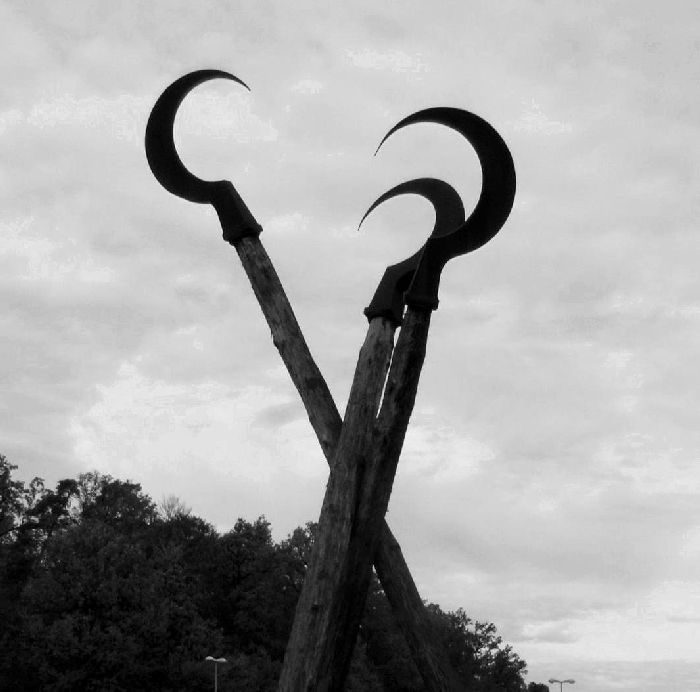Japanese Navy Underground Headquarters Memorial and Museum at Tomishiro, Okinawa
Pictures and text by Nicole Rodriguez
The Former Japanese Navy Underground Headquarters Memorial and Museum is located in Tomishiro-city, Okinawa, Japan on a beautiful hilltop that is well-maintained with flowers, bushes, and trees all neatly kept, directly above the site of the site of the original Underground Headquarters. It was built and funded by the Japanese government in remembrance of the 188,136 brave Japanese and Okinawans, both military and civilian, who lost their lives during the Battle of Okinawa. The monument and museum were opened to the public in March 1970, by the Tourism Development Board with a dedication for the memory of Vice Admiral Minoru Ota, Commanding Officer of the Japanese Navy, and his men who committed suicide in the tunnels of the Underground Headquarters after a crushing blow by the American forces during the Battle of Okinawa on June 13, 1945.
The Naval Underground Headquarters was built in 1944 and consisted of a tunnel system measuring roughly 450 meters in length. In the tunnels, rooms were built for all of the Japanese military operations including the Officers’ rooms, an operation room, a medical room, a staff room, and a signal room. The Underground Headquarters could house approximately 4,000 soldiers and was used by the Japanese to sustain the fighting with the American forces. The American forces dropped approximately 4 shells for every person living on Okinawa at the time. This caused complete destruction of the island and killed more than 37,000 non-fighting civilians and 50,000 civilians who were attempting to help the Japanese Navy. For many years the business of rebuilding the island left the underground headquarters untouched, but when excavation began, the remains of approximately 2,400 people were found and removed from the tunnels.
The memorial consists of a tall central monument with Japanese inscriptions, three shorter monuments with dedications, and a ship mast and anchor to honor the Navy. The styling of the monuments has been compared to similar monuments for World War II in Europe. Visitors gathering photos for an exhibit stated to a local paper, “In some respects, the Okinawan war memorial reminds me of the museum in Auschwitz and other European was memorials.“ Many pre-war memorials in Japan tend to look like shrines or are statues of animals or Buddha’s, while World War II memorials show the increase in western influence.
All of the inscriptions and dedications on the monuments are in Japanese except for one short paragraph that has a dedication in English. It states “This monument is dedicated to the memory of Vice Admiral Minoru Ota, Commanding Officer of the Japanese Navy and his 4,000 men who committed suicide in this underground headquarters on June 13, 1945 after having shared in a hard-fought battle during World War II. A poem carved in a wall of this trench by Admiral Ota as his farewell word is still legible. Commanding Officer‘s room, center of operations, and the staff room remain in this underground headquarters which are reminiscent of the bygone days.”
There are small tokens left by the visitors to the site scattered at the base of the monument and throughout the tunnels; flowers, money left with a Buddha, and paper cranes that represent grief and prayer for peace for the people that lost their lives in the war. Even on a weekday morning, off the beaten path, there are both Japanese and American people taking a tour of the tunnels and stopping at the monument. The monument and the museum are extremely well-kept. In order to maintain the tunnel system for future viewing, additional cement was added but very little else in order to maintain authenticity and to give viewers a real feel for what the soldiers endured. There are only a few plaques and drawings added along the tunnels to explain how the rooms were used, for example one drawing depicts several wounded soldiers laying in the tunnels outside of a room and an excerpt below the drawing explains that survivors of the battle recall seeing numerous casualties in the area, so it was assumed that the area was the Medical Treatment Room.
This memorial focuses mainly on the military men who gave their lives in the Battle of Okinawa, although there is mention of the civilian casualties of the local Okinawans both in the pamphlets and during the tunnel tour detailing what they endured as a byproduct of the fighting. Admiral Ota, in his last telegram to the Navy Vice Admiral, recognized the Okinawans for their bravery and support during the battle and asked for special consideration for their services. He states “The Okinawan people have been asked to volunteer their labor and conserve their resources. In their heart, they wish only to be serve as loyal Japanese…There are no trees, no grass; everything is burnt to the ground. The food supply will be gone by the end of June. This is how the Okinawan people have fought the war.”
The only person actually named on the memorial is Admiral Ota, with the rest of his men listed only as a number. The main focus of the memorial seems to be a message of peace, asking its viewers to see the tragedy of war. There is nothing outwardly violent in the monuments, rather their simplicity and styling feel like the embodiment of peace. They are set majestically on top of a hill overlooking the town and ocean, surrounded by lush greenery and beautiful flowers, making you feel apart from the bustling city only five minutes down the hill. The museum is tastefully simple, set off to the side from the monuments. To get to the tunnels you descend one level by elevator, where you then have access to the tunnels. There is little other than a few display cases with artifacts from the time period and a single counter where you can purchase tickets to see the tunnels.

|
. |

|
. |
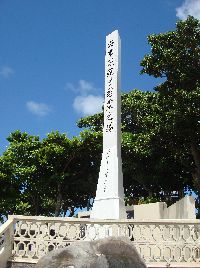
|
. |
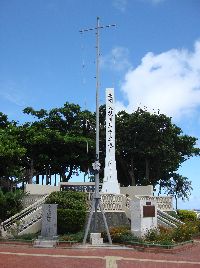
|
. |

|
. |
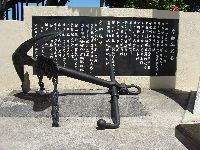
|
. |

|
. |

|
. |

|
. |

|
. |

|
. |
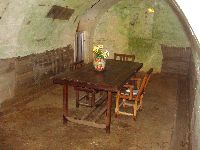
|
. |

|
. |

|
. |
